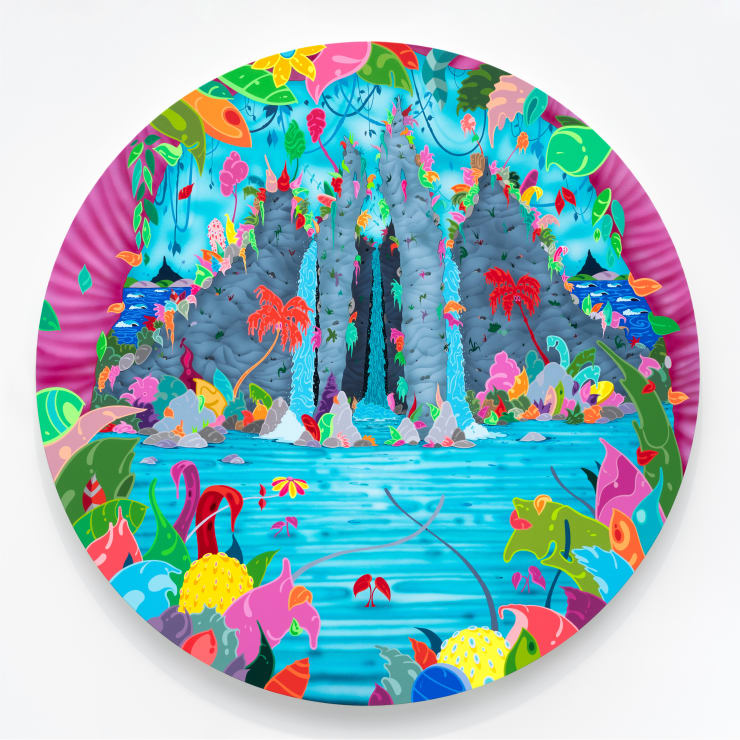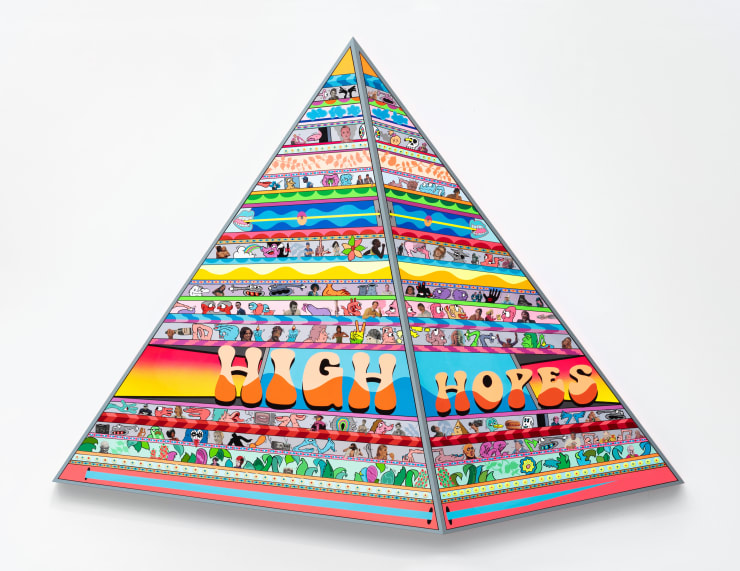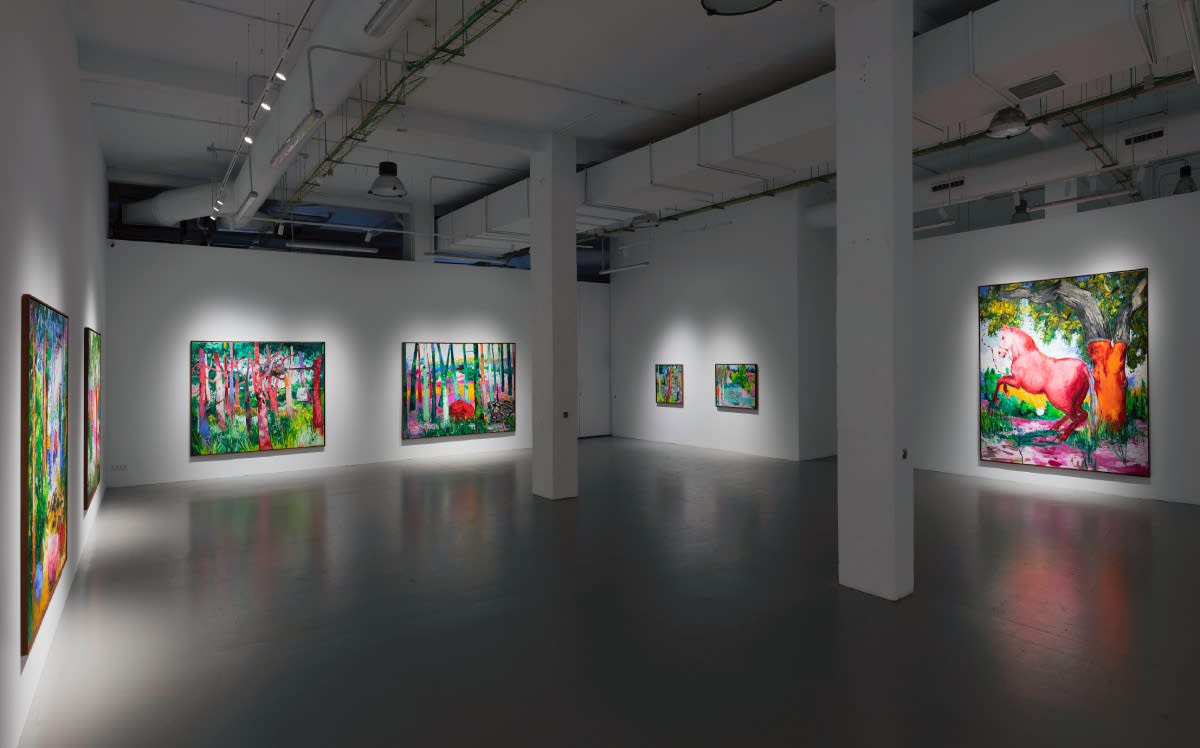Erik Parker: High Hopes
VETA by Fer Francés is pleased to present High Hopes, a major solo exhibition by artist Erik Parker. Born in 1968, Stuttgart, Germany, Parker was raised in Texas and, in the late 1990s, settled in New York, where he combined his art studies with gallery work until he was finally able to devote himself entirely to painting. Inspired by the American counterculture, comic books, underground magazines and, in general, the aesthetics of the 70s, he creates paintings full of psychedelic aspect, both idealized and dreamlike landscapes as well as irreverent and complex portraits from which a social reading emerges.
The exhibition High Hopes brings together tondos, portraits and pyramids, where different techniques are combined, but Parker's recognizable pictorial style is always preserved. On the one hand, exuberant landscapes of an almost alien exoticism are shown, suggesting a fanciful escape from reality. This sensation is reinforced by the circular format of the paintings, whose vegetation frames and concentrates the viewer's point of view, turning the visitor into a sort of explorer observing distant lands through a spyglass. The portraits show figures made up of a multitude of elements, in the manner of a "modern Arcimboldo", as Jeff Gibson has described him. In them, a new biology flows around constructions formed by texts, images and references to popular culture, in what can be read as an accurate and critical contemporary portrait. And finally, in the pyramids, that same aesthetic approach is organized in a stratified geometry. This admits readings as disparate as the sacred, the conspiratorial, the mythical, the hierarchical, and even deception and disillusionment in its resemblance to Ponzi schemes.
Influenced by Rousseau, Basquiat and the Chicago Imagists, but also by Carrol Dunham and Peter Saul, whose student he was, Parker has developed a very distinctive pictorial vocabulary. With a permanent and select musical thread in the studio, Parker works situating himself with one foot planted deep in the 1970s, while with the other he gropes and scrambles in the present, offering it to us, paradoxically, with a fresh and pertinent crispness. "The idea," Parker says, "is to take something familiar and make it strange." Generic archival photographs, found on the web, are projected onto canvas and reinvented in paint. Magazine clippings from the 1970s, when the quality of the paper was higher precisely because there was no internet, are combined with striking phrases written in retro typefaces. Aesthetic nostalgia is knotted with popular culture, while a connection is established between hippie psychedelia and possible mutant vegetable futures to dream about or retreat to. Great hopes, frustrated or renewed, come together in an amalgam where to get lost with the look, and that is undeniably familiar, at the same time absolutely strange, and therefore extremely interesting.













